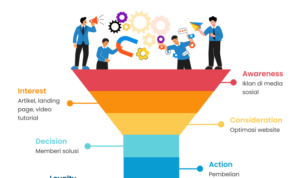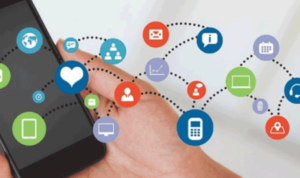Multi-Channel Marketing is where it’s at, dude! This strategy is all about hitting up your peeps through different channels, like social media, email, and more. Get ready to dive into a world of endless possibilities and killer campaigns that’ll have your brand shining bright like a diamond in the digital sky.
Let’s break it down for ya – from defining multi-channel marketing to exploring the benefits and challenges, we’re gonna take you on a wild ride through the realms of marketing magic. So grab your favorite beverage, kick back, and let’s get this party started!
Introduction to Multi-Channel Marketing
Multi-channel marketing is a strategy that utilizes multiple channels to reach customers, such as social media, email, websites, and physical stores. In today’s digital landscape, where consumers interact with brands across various platforms, multi-channel marketing is crucial for businesses to stay competitive and engage with their target audience effectively.
Difference between Multi-Channel Marketing and Omni-Channel Marketing
Multi-channel marketing focuses on using different channels to reach customers, while omni-channel marketing ensures a seamless and integrated experience across all channels. The key difference lies in the level of consistency and continuity in the customer journey. While multi-channel marketing may involve siloed channels, omni-channel marketing aims to provide a unified experience regardless of the channel used.
Benefits of Implementing a Multi-Channel Marketing Strategy
- Increased brand visibility: By utilizing multiple channels, businesses can increase their brand’s visibility and reach a wider audience.
- Improved customer engagement: Engaging customers through various channels allows businesses to connect with them at different touchpoints, enhancing the overall customer experience.
- Enhanced targeting and personalization: With data collected from multiple channels, businesses can better understand their customers’ preferences and behavior, allowing for more targeted and personalized marketing campaigns.
- Diversification of risk: Relying on a single channel can be risky, as changes in algorithms or policies can impact reach. A multi-channel approach spreads out the risk and protects against sudden changes in one channel.
Types of Marketing Channels: Multi-Channel Marketing

Marketing channels play a crucial role in reaching target audiences and promoting products or services. Let’s explore some common marketing channels and how they can be utilized effectively.
Social Media
Social media platforms like Facebook, Instagram, Twitter, and LinkedIn are powerful tools for reaching a wide range of audiences. Companies can create engaging content, run targeted ad campaigns, and interact directly with customers to build brand awareness and drive sales.
Email marketing remains a popular and effective channel for reaching both new and existing customers. By sending personalized messages, promotions, and updates directly to a subscriber’s inbox, businesses can nurture leads and encourage repeat purchases.
Search Engines
Search engine marketing (SEM) involves using paid search ads to appear at the top of search engine results pages. This channel is particularly effective for targeting users actively searching for specific products or services, increasing visibility and driving traffic to a website.
Physical Stores
While digital channels dominate modern marketing strategies, physical stores still play a crucial role in engaging customers and driving sales. In-store promotions, events, and personalized experiences can create a strong connection with local audiences and enhance brand loyalty.Examples of successful multi-channel marketing campaigns include Nike’s use of social media influencers and email marketing to promote new product launches, Starbucks’ mobile app integration with in-store experiences, and Amazon’s seamless integration of online and offline shopping experiences.
Integration of Marketing Channels
In today’s digital age, integrating various marketing channels is crucial for businesses to create a seamless and cohesive brand experience for their customers. By combining different channels such as social media, email, and website, companies can reach their target audience more effectively and ensure a consistent message across all platforms.
Significance of Integration
Integrating marketing channels allows businesses to create a unified brand presence, leading to increased brand recognition and customer loyalty. By connecting the dots between different channels, companies can provide a more personalized and engaging experience for their customers.
Data and Analytics Optimization
Data and analytics play a key role in optimizing multi-channel marketing efforts. By analyzing customer behavior and engagement metrics across various channels, businesses can gain valuable insights into their target audience’s preferences and interests. This data-driven approach enables companies to tailor their marketing strategies for each channel, resulting in higher conversion rates and ROI.
Challenges of Integration
- One of the main challenges businesses face when integrating multiple channels is maintaining consistency in messaging and branding. With different channels comes the risk of diluting the brand identity if not managed properly.
- Another challenge is the complexity of managing and measuring the performance of each channel. Businesses need to invest in the right tools and technologies to track the effectiveness of their multi-channel campaigns accurately.
- Lastly, ensuring seamless communication and coordination between different departments responsible for each channel can be a hurdle. Clear communication and collaboration are essential to avoid disjointed marketing efforts.
Personalization in Multi-Channel Marketing

Personalization in multi-channel marketing is crucial for creating a more tailored and engaging experience for customers across different marketing channels. By providing personalized content, businesses can better connect with their target audience, increase customer loyalty, and drive conversions.
Importance of Personalized Content
Personalized content helps businesses stand out in a crowded marketplace by delivering relevant messages to individual customers based on their preferences, behaviors, and interactions with the brand. This targeted approach not only improves customer satisfaction but also increases the likelihood of conversion and repeat purchases.
- Customized product recommendations: E-commerce sites like Amazon use personalized product recommendations based on previous purchases and browsing history to enhance the shopping experience and encourage additional purchases.
- Personalized email campaigns: Retailers often send personalized email campaigns with tailored content and offers to specific segments of their customer base, increasing open rates and click-through rates.
- Dynamic website content: Websites can dynamically display content based on user behavior, such as showing related products or content based on previous interactions, creating a more personalized experience for visitors.
Role of AI and Machine Learning, Multi-Channel Marketing
AI and machine learning play a significant role in enabling personalized multi-channel marketing campaigns by analyzing large amounts of data to predict customer behavior and preferences. These technologies help businesses automate the process of personalization by delivering the right message to the right person at the right time through the most effective channel.
- Behavioral targeting: AI algorithms can analyze customer behavior across different channels to deliver personalized recommendations and content that resonate with individual preferences.
- Predictive analytics: Machine learning models can predict future customer actions based on historical data, allowing businesses to anticipate customer needs and personalize marketing messages accordingly.
- Chatbots and virtual assistants: AI-powered chatbots and virtual assistants can provide personalized support and recommendations to customers in real-time, improving the overall customer experience and driving engagement.
Measuring Success in Multi-Channel Marketing
In the world of multi-channel marketing, it’s crucial to have a clear understanding of how to measure success. By utilizing key performance indicators (KPIs), attribution models, and A/B testing, marketers can evaluate the effectiveness of their strategies and optimize their campaigns for better results.
Key Performance Indicators (KPIs)
- Conversion Rate: The percentage of visitors who take a desired action on your website or landing page.
- Customer Lifetime Value (CLV): The total revenue a business can expect from a customer throughout their relationship.
- Return on Investment (ROI): The ratio between the net profit and the cost of the investment.
Attribution Models
Attribution models help marketers understand the impact of each marketing channel on a customer’s decision-making process. By assigning credit to each touchpoint, businesses can allocate resources effectively and optimize their multi-channel approach.
A/B Testing for Optimization
A/B testing involves comparing two versions of a marketing asset to determine which one performs better. By testing different elements such as messaging, visuals, or calls-to-action across channels, marketers can identify the most effective strategies and refine their campaigns for maximum impact.
Case Studies and Best Practices
In the world of multi-channel marketing, it’s crucial to learn from successful brands and understand best practices to create a seamless customer journey. Let’s dive into some case studies and explore the emerging trends in this dynamic field.
Starbucks: A Multi-Channel Success Story
Starbucks is a prime example of a brand that has excelled in implementing multi-channel marketing strategies. By seamlessly integrating their mobile app, website, social media platforms, and physical stores, Starbucks has created a unified experience for customers. Their loyalty program, which allows customers to earn rewards across channels, has been a key driver of success.
- Utilizing a mobile app for ordering and payment, allowing for a convenient and personalized experience.
- Implementing a robust loyalty program that rewards customers for engagement across channels.
- Integrating social media campaigns with in-store promotions to create a cohesive brand experience.
Starbucks’ approach to multi-channel marketing showcases the importance of creating a seamless customer journey across all touchpoints.
Best Practices for Multi-Channel Success
To create a seamless multi-channel customer journey, businesses can follow these best practices:
- Ensure consistency in branding and messaging across all channels.
- Personalize the customer experience based on data and preferences.
- Integrate data from different channels to gain a holistic view of the customer journey.
- Optimize for mobile to meet the needs of on-the-go consumers.
Emerging Trends in Multi-Channel Marketing
As technology continues to evolve, businesses must adapt to stay competitive in the multi-channel landscape. Some emerging trends include:
- Increased use of AI and machine learning for personalized customer experiences.
- Rise of voice search and smart speakers as new channels for engagement.
- Growth of social commerce, allowing for direct purchasing through social media platforms.





